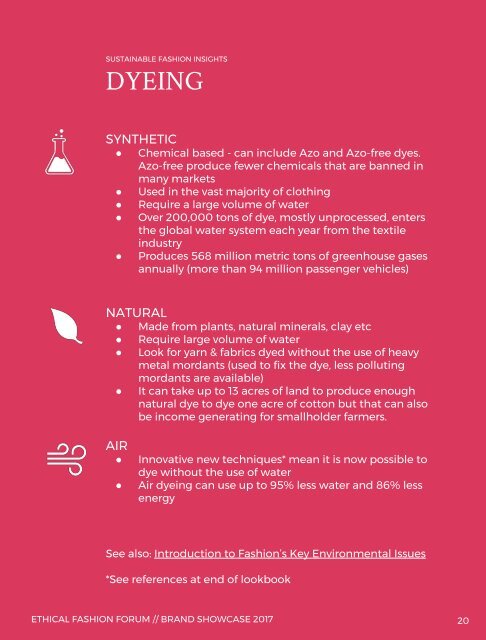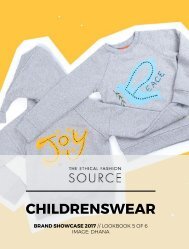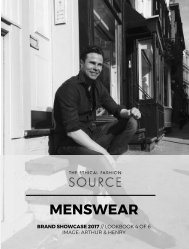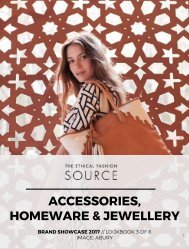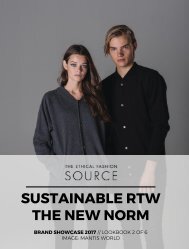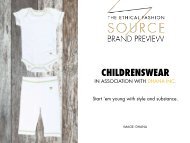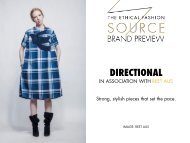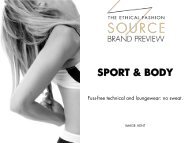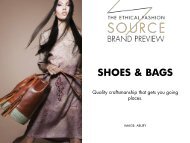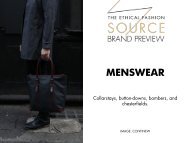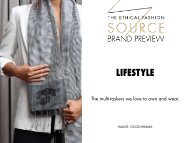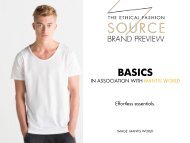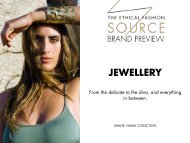Brand Showcase 2017: Directional Womenswear
Lookbook 1 of 6 focusing on luxury, directional womenswear from sustainable brands and designers who are members of SOURCE
Lookbook 1 of 6 focusing on luxury, directional womenswear from sustainable brands and designers who are members of SOURCE
Create successful ePaper yourself
Turn your PDF publications into a flip-book with our unique Google optimized e-Paper software.
SUSTAINABLE FASHION INSIGHTS<br />
DYEING<br />
SYNTHETIC<br />
● Chemical based - can include Azo and Azo-free dyes.<br />
Azo-free produce fewer chemicals that are banned in<br />
many markets<br />
● Used in the vast majority of clothing<br />
● Require a large volume of water<br />
● Over 200,000 tons of dye, mostly unprocessed, enters<br />
the global water system each year from the textile<br />
industry<br />
● Produces 568 million metric tons of greenhouse gases<br />
annually (more than 94 million passenger vehicles)<br />
NATURAL<br />
● Made from plants, natural minerals, clay etc<br />
● Require large volume of water<br />
● Look for yarn & fabrics dyed without the use of heavy<br />
metal mordants (used to fix the dye, less polluting<br />
mordants are available)<br />
● It can take up to 13 acres of land to produce enough<br />
natural dye to dye one acre of cotton but that can also<br />
be income generating for smallholder farmers.<br />
AIR<br />
●<br />
●<br />
Innovative new techniques* mean it is now possible to<br />
dye without the use of water<br />
Air dyeing can use up to 95% less water and 86% less<br />
energy<br />
See also: Introduction to Fashion’s Key Environmental Issues<br />
*See references at end of lookbook<br />
ETHICAL FASHION FORUM // BRAND SHOWCASE <strong>2017</strong><br />
20


